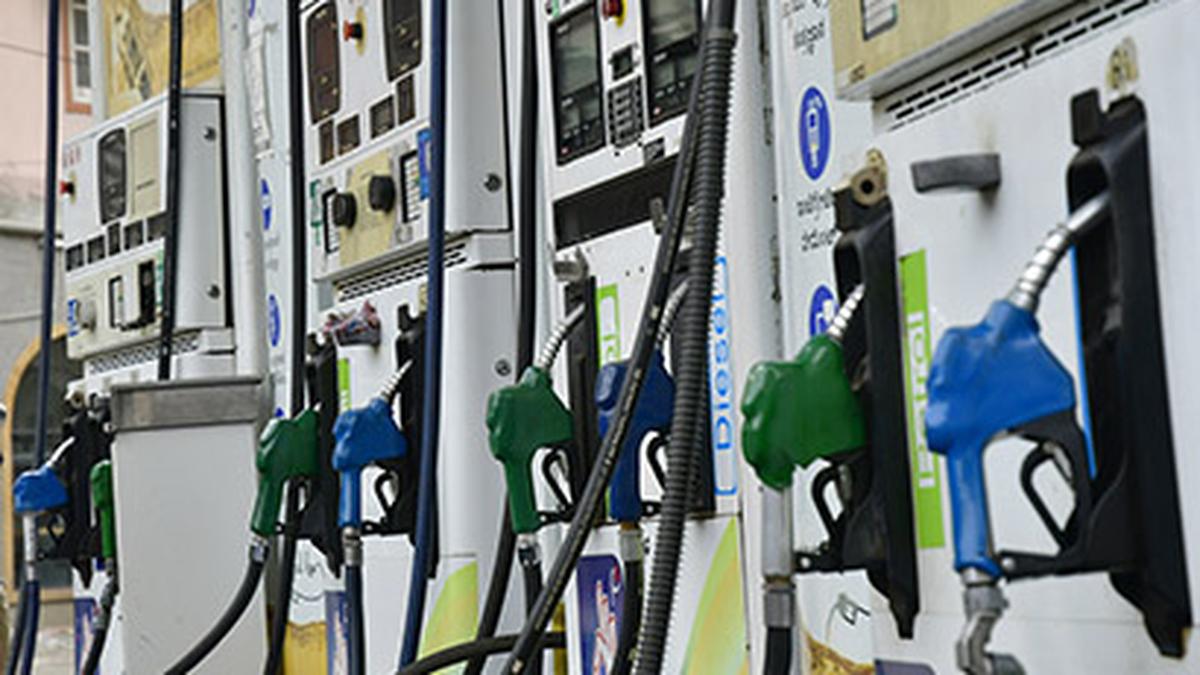
The Ministry’s statement emphasised there have been no issues relating to either drivability, ability to start the vehicle or metal and plastic compatibility. File.
| Photo Credit: K. Murali Kumar
Addressing contestations about the impact of blending ethanol with petrol for vehicular fuel, the Ministry of Petroleum and Natural Gas (MoPNG) in a detailed statement Tuesday (August 12, 2025) underlined it would provide better ride quality alongside ensuring greater income to farmers and bearing a positive impact on foreign exchange reserves. The statement also refuted prevailing assertions about insurers refusing claims for damage to vehicles from the blended fuel.
Editorial | Assuaging concerns: On India and ethanol-blended fuel
E20 fuels provides better ride quality
MoPNG argued the blended fuel provides better acceleration and better ride quality alongside lower carbon emissions, by approximately 30%, as compared to the E10 predecessor. It held vehicles tuned for the 20% blend deliver better acceleration — holding it as an “important factor in city driving conditions”.
Furthermore, seeking to allay concerns about damage to automotive parts and engines, the statement emphasised there have been no issues relating to either drivability, ability to start the vehicle or metal and plastic compatibility. However, it noted that “certain older vehicles” may have to replace some rubber parts and gaskets which were designed as per the non-blended fuel. “The replacement is inexpensive and can be easily managed during routine servicing,” the statement read. It added that this would be required to be done only “once in the life time of vehicle” and can be done at “any authorised workshop”.
The statement described assertions about “drastic” reduction in fuel efficiency as “misplaced”. It argued vehicular mileage is influenced by a variety of factors beyond fuel variant, as “driving habits, maintenance practices such as oil changes and air filter cleanliness, tyre pressure and alignment, and even air conditioning load.”
About ₹1.44 lakh crore saved in Forex
MoPNG underlined during the last eleven years from ESY 2014-15 to 2024-25 up until July this year, ethanol blending has contributed to public sector oil marketing companies (OMCs) saving about ₹1.44 lakh crore. MoPNG said the money which was earlier being utilised for crude oil imports was now going to farmers.
Specifically delving on the benefits to the rural economy, it underlined the blended fuel helped eliminate arrears from sugarcane procurement and improving the viability of maize cultivation in the country. It attributed the paradigm to have not just furthered well-being but also helped tackle “the challenge of suicide by farmers”.
Furthermore, the Ministry estimated that farmers this year alone would be receiving ₹40,000 crore with the country conserving ₹43,000 crore in foreign exchange spending.
Attempts at mongering fear about car insurance “baseless”
MoPNG also refuted “false narratives’ about insurance companies not covering damage emanating from the use of the blended fuel. It stated, “This fear mongering is totally baseless and has been clarified by an insurance company whose tweet screenshot was deliberately misinterpreted to create fear and confusion.”
It stressed usage of E20 fuel would not impact the validity of insurance vehicles in India.
Procurement costs of ethanol not helping lower fuel prices
Addressing concerns about the cost advantage of the blended fuel not being passed to end customers, the statement underlined the weighted average price of ethanol being higher than the cost of refined petrol.
The Ministry attributes this to a combination of price of procurement and increase in price of the blending agent, that is, either maize or C-heavy molasses. Elaborating on the same, it pointed to the average price of procurement in the ongoing ESY at the end of July being ₹71.32 for every litre — inclusive of transportation and GST. One-fifth of the procurement is mixed with the base fuel, that is, refined petrol. Imperative to note here, that the price of C-heavy based ethanol has increased about 24% between ESY 2021-22 and ESY 2024-25 whilst price of maize-based ethanol increased approx. 36% during the same period.
Energy security with the blended fuel, impact on emissions
MoPNG held the blended fuel helped substitute crude oil of about 245 lakh metric tonnes to provide for “crucial energy security needs”, alongside reducing carbon dioxide (CO2) emissions by approx. 735 lakh metric tonnes — equivalent of planting 30 crore trees.
Further lending context about emissions, MoPNG argued that ethanol has a higher octane number (of about 108.5) than petrol (84.4). Thus, making ethanol-blended fuels “a valuable alternative for higher-octane requirements crucial for modern high-compression engines”. For perspective, octane rating are a measure of fuel’s stability. It denotes the pressure at which a fuel will combust.
The statement argued that regular petrol in India bears an octane rating of 91. This is to meet the requirements of BS-VI line of vehicles to combat harmful emissions. MoPNG noted blending 20% ethanol has improved the rating to 95. Thus, contributing to “better anti-knocking properties and performance”.
Addressing apprehensions about India progressing beyond E20, MoPNG informed that would entail submission of recommendations, their evaluation and consultations with stakeholders. “The decision is yet to be taken,” it underlined.
Published – August 12, 2025 08:20 pm IST
